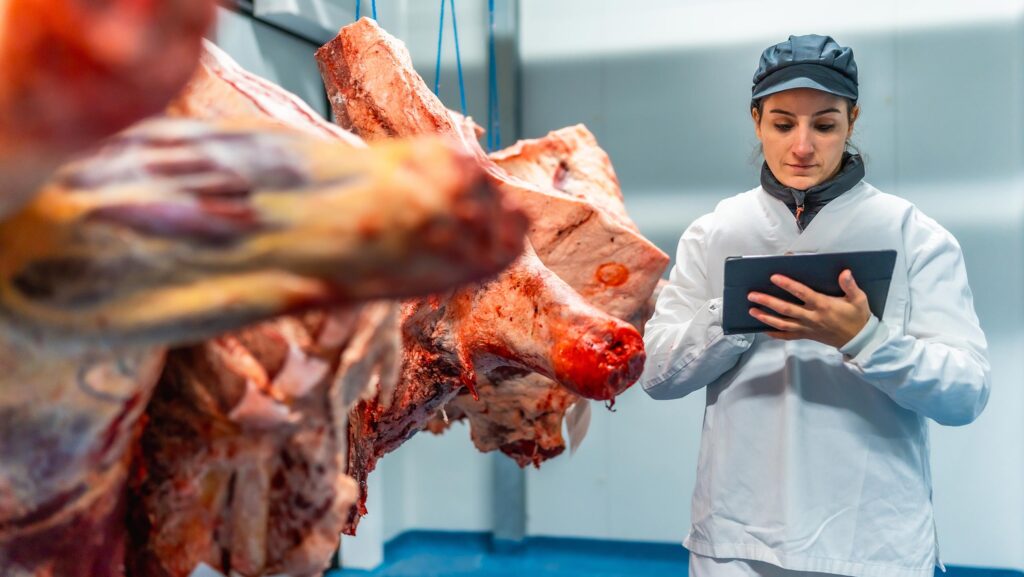Meat suppliers claim inspection regime is ‘outdated’
 © Adobe Stock
© Adobe Stock Traditional post-mortem meat inspections are not fit for the future and should be replaced by modern technology, according to the Association of Independent Meat Suppliers (Aims).
Pointing to faecal detection technology used in New Zealand, real-time fluorescence-based scanning that detects both visible and invisible contamination would be a more efficient option, it says.
Aims executive director Jason Aldiss said: “Nowadays we are fighting invisible threats such as salmonella, E coli and campylobacter – pathogens that leave no visible trace and cannot be detected by even the most skilled inspector using sight, touch or smell alone.”
See also: FSA’s meat inspection fee hikes set to take effect
The UK, he added, should be leading on food safety reform and use technology to inspect carcasses.
“Unlike humans, it doesn’t get tired, doesn’t miss things, doesn’t need a break or threaten to take strike action and, what’s more, it provides data that you can act on,” said Mr Aldiss.
Outperforming human inspections
In side-by-side comparisons, he added, these systems outperform human inspectors every time.
“Every time we sign-off a carcass with a poke, a sniff, and a tick box, we are lulling ourselves into a false sense of security.
“It might look like food safety, but it isn’t,” he said.
To address the issue, Aims is calling on UK regulators to make changes to the way meat is currently inspected in the UK, including:
- Replace visual inspection requirements with outcome-based, risk-focused standards
- Validate and back this with meaningful investment
- Mandate scientifically proven decontamination interventions where appropriate
- Retrain and repurpose the inspection workforce as high-tech auditors, not lesion hunters
- Champion UK leadership in Codex and the World Organisation for Animal Health to push for global reform.
NFU livestock board chair David Barton supports the call for change.
“The current way the FSA delivers official controls places a significant financial burden on processing businesses. Science and technology have and continues to move at pace and we need to adopt these technologies during primary processing to reduce the burden on the sector but ensure all meat products are safe for the public to consume,” he said.
Safety a top priority
Junior Johnson, director of operations at the Food Standards Agency (FSA), said ensuring the safety of UK produced meat is their top priority.
“We do this through robust and effective meat inspection practices that protect UK consumers and uphold public trust,” he said.
He added that the FSA is looking at ways to modernise the way it operates across meat plants, actively exploring and collaborating on new technologies with industry, including contamination scanners and AI-enhanced audit processes that can detect threats invisible to traditional methods.
“While this work is important, physical inspections remain a vital safeguard in the meat supply chain, providing direct assurance that hygiene, animal welfare and food safety standards are being met at every stage of production,” said Mr Johnson.
